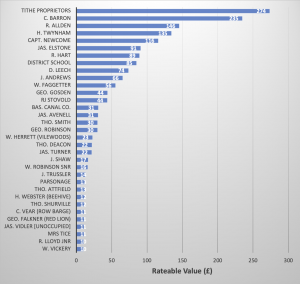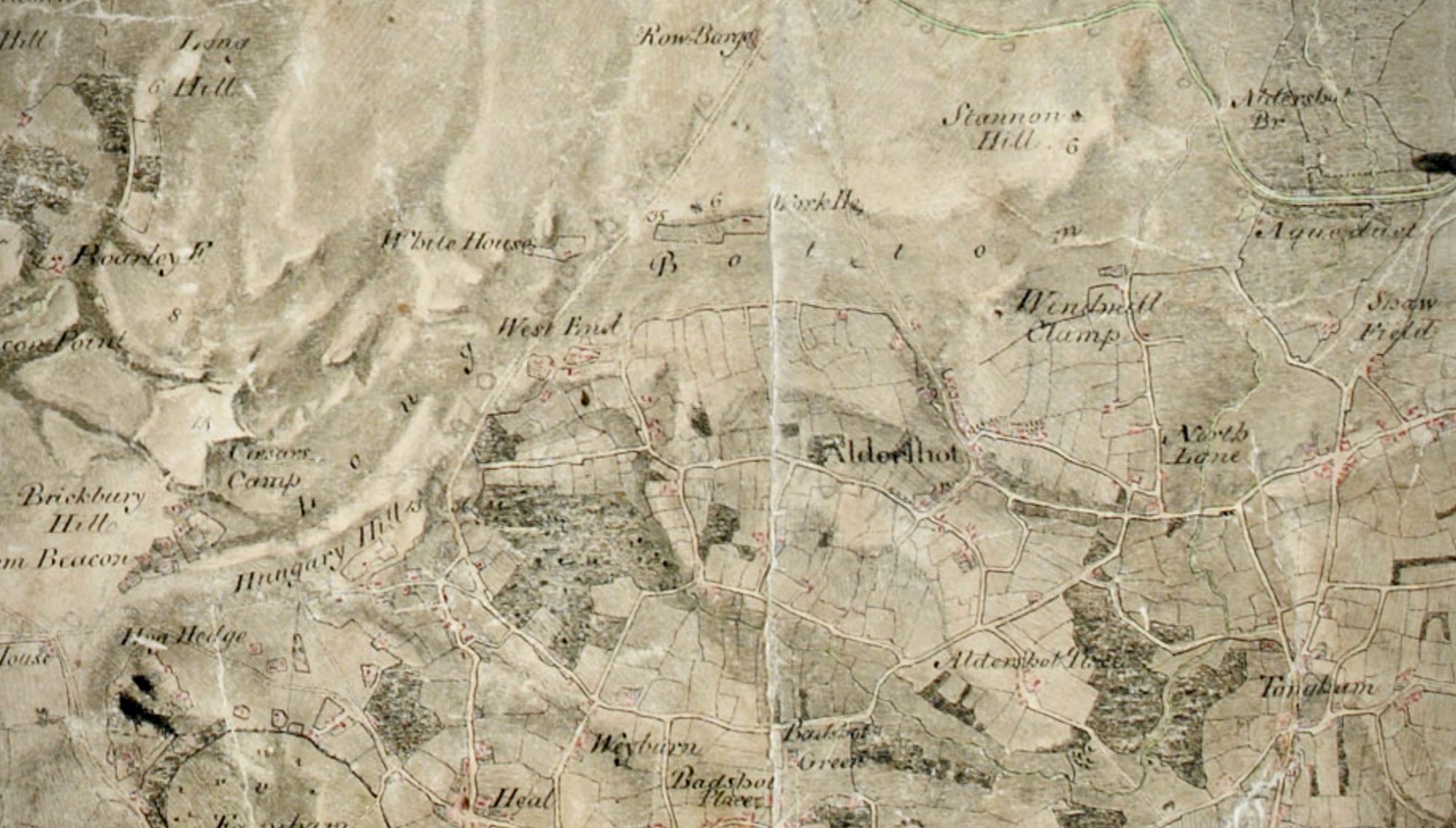Poor Law Rate Book for April 1853
The Rate Book listed the owners and occupants for a total of 216 properties, of which 160 were residential. That included the 3 public houses which had living quarters as well as space for guests.
What might have surprised the young curate, had he the opportunity to inspect the Poor Rate Book, or indeed the Church Rate Book, was that the ‘property’ attracting the largest rateable value, of £273 – 15s, was referred to as owned by the ‘Tithe Proprietors’, Messrs. Allden, Eggar, Andrew and Tice.
The advowson, that is the right to collect the tithes and to appoint the curate, was regarded as an asset which was liable to tax. As a collective, the Tithe Proprietors paid £17 – 2s. 2¼d in April 1853 towards the relief of the poor and the maintenance of the highways.
Occupiers of Properties in Aldershot, Rateable Value > £10, April 1853

Thirty three rate payers owned properties having a rateable value (RV) of £10 or more. The physical estate having the highest rateable value (of £235) was occupied (and owned) by Charles Barron Esq, the compact 209-acre Aldershot Park. He paid £14 – 13s. 9d in April 1853 towards the relief of the poor and the maintenance of highways; he would contribute more at the next two collection of rates later in the year, in July and October.
Second on the list was the yeoman farmer, Richard Allden. His properties of 146 acres, including Elm Place farm, had a rateable value of £145. He paid much less, £9- 2s. 1½d in April.
Richard Allden was the only resident amongst the Tithe Proprietors, In April, he contributed an additional £4 -5s. 6½d to the £9- 2s. 1½d he paid for his physical estate, a total sum of £13 – 7s. 8d which was very close therefore to that paid by Charles Barron.
Other owner-occupiers, having sizeable properties and also playing leading roles in the Vestry included Captain Newcome whose Manor House estate attracted a rateable value of £116. Another was James Elstone of the 24-acre Aldershot Lodge estate. The 22-acres of farmland owned by George Robinson had a combined value of £91 RV.
The third occupier on the list, however, was Henry Twynam. He had taken on the lease of farmland owned by Samuel Eggar, both the 142 acres of Riley’s Farm and additional arable fields. That had a combined rateable value of £135. Twynam was a tenant farmer, a businessman who paid the rates himself, returning £7 – 14s. ¾d that April to the parish for the relief of the poor.
Hart, Leech and Faggetter were also tenant farmers who leased land and paid the rates and other taxes themselves.
-
- Robert Hart worked properties with a combined RV of £89. (That total included the 79 acres owned by Mrs Tice, widow of William Tice of Holy Grow Farm.) .) Mrs Tice had retired to live at Cross House (RV £11) with her unmarried daughter.
- Dunstan Leech worked the 63 acres at Prowtings Farm, valued at £ 73- 15s., owned by , the son of William Tice; Henry Tice had bought it from Reuben Attfield.
- William Faggetter worked the 73-acre West End Farm (RV £55 – 10s) owned by Mr Houlden, the solicitor from Farnham.
In like manner, the publicans were also responsible for payment of the rates, Henry Webster for the Beehive Inn, George Faulkner for the Red Lion and Clewer Vear for the Row Barge.
There were two other sources of rates from corporate bodies. One was the Basingstoke Canal Company which provided continuing income for the canal that had been cut across Aldershot Heath in 1794. The other was the Management Board of the school operated for the pauper children of three poor law unions. The building and land used for the District School for Paupers had a combined rateable value of £85. Despite having been sold in 1847 for a capital sum to the Farnham Poor Law Union, the former Aldershot Workhouse, whose construction was made possible through the bequest of Mrs Viner in 1761, continued to benefit the parish chest. The significant sum of £5 – 6s. 3d was paid as rates in April 1853.
